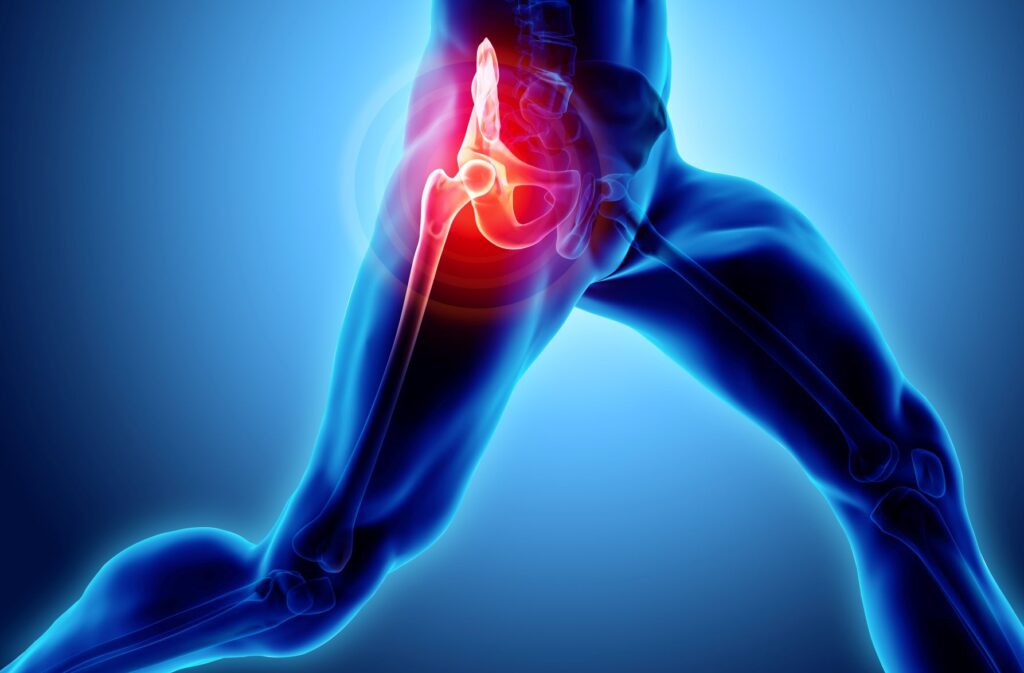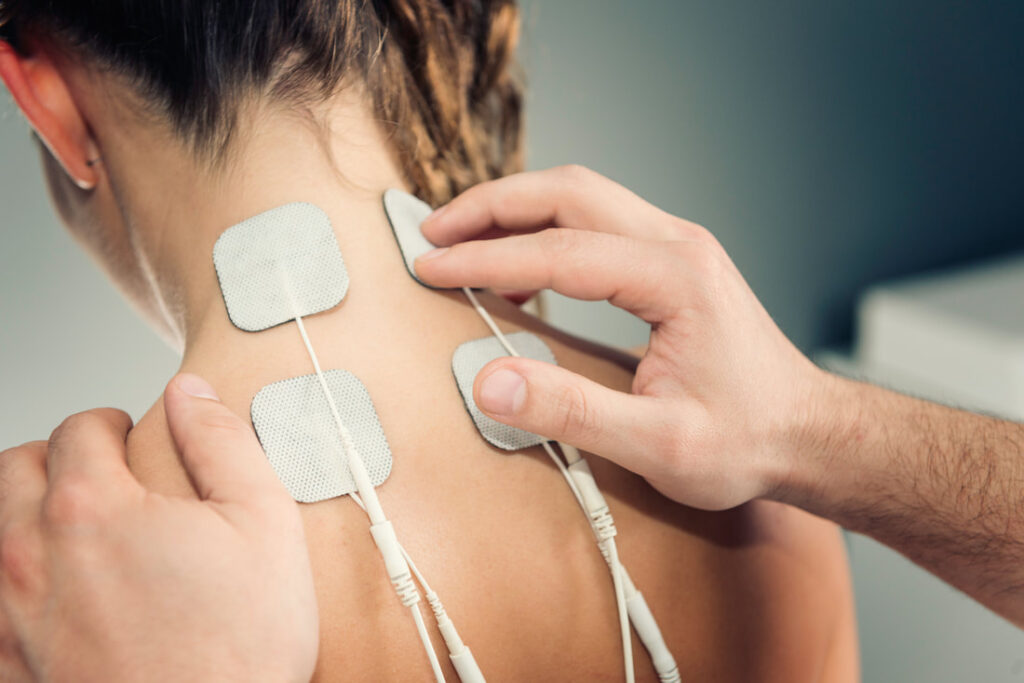Referred Pain: What It Is And What To Do About It

Usually, when you’re in pain, you can tell right away where it exactly hurts. For example, if you accidentally hit your leg against the leg of a table, you’ll feel the ache only in the spot that came into contact with the furniture.
However, there are some types of pain that are harder to figure out. In particular, it’s possible for you to feel it in one body part but the main trigger is in another area. If you’ve experienced this before, then you know what referred pain feels like. A common example of this is the brain freeze you get when you drink or eat something cold too quickly. Jaw ache that occurs prior to a heart attack is also another example.
In this article, you’ll learn more about referred pain and what you can do to treat or alleviate it.
What Is Referred Pain?

Referred pain is an achy feeling perceived in an area other than the location of the origin of the painful stimulus. Because sensory nerves that supply different tissues in the body are interconnected, it’s possible that the brain interpretation of the pain signal involves the surrounding nervous tissues other than the site of the injury.
The body parts where it commonly occurs include the hip, neck, shoulders, sides of the body, lower back, upper back, jaws, and teeth. If you suspect that you may have referred pain, it’s important to determine the root cause with the help of an experienced doctor like the ones you’ll find at aaronaltenburgmd.com.
Common Causes Of Referred Pain
When the human body experiences a painful stimulus, the nervous system transmits a signal from the site to the brain, which then sends back signals to the area of injury and possibly to another body part, which are essentially instructions about what should be felt. Aside from a heart attack, here are other most common causes of referred pain:
- Phantom Limb Pain: This is caused by amputation of an extremity, such as an arm or a leg. The patient may perceive the pain that comes from the removed body part. For instance, the patient feels achy in their left hand although it’s no longer there after the amputation.
- Kehr’s Sign: Felt in the shoulder blade, this is most likely due to an injured or ruptured spleen.
- Brain Freeze: When eating ice cream or drinking cold beverages, the stimulus originates from the mouth and throat. But with the subsequent stimulation of the vagus nerve, the ‘freeze’ can be felt in the brain and the back of the head.
- Other Medical Problems: A patient with a stomach condition may experience upper backache. On the other hand, colon or kidney problems like urinary tract infections will make you feel achy on the lower back and on the sides of your body.
How To Treat Referred Pain
If you believe that what you have is referred pain, it’s important to see a doctor right away. Your doctor will make a complete assessment to identify the possible root cause and plan the best treatment process to get rid of the problem.
Medication

Acute pain usually stems from an underlying health problem, such as infection. Its treatment often involves taking analgesic medications like the following:
- Acetaminophens: This can also reduce fever, and it’s recommended for addressing moderate to severe pain. But remember to avoid taking a higher dosage of acetaminophen than what your doctor prescribes to avoid serious liver damage.
- Nonsteroidal Anti-Inflammatory Drugs (NSAIDs): These can help treat referred pain, including backache and headache. However, since stomach bleeding is a possible side effect of taking NSAIDs, make sure to check the maximum dosage of the drug before taking it.
- Opioids: The initiation of opioid medication, such as buprenorphine and naloxone therapy, provides significant relief for referred pain. However, you should follow the drug prescription strictly because opioids can be highly addictive.
- Anticonvulsants: Gabapentin is a type of anticonvulsant drug that has been proven effective in treating postamputation phantom limb pain. This medication is also used as a treatment for partial seizures like epilepsy and neuropathy.
Emergency Treatment For A Heart Attack
The referred pain felt right before a heart attack may happen in less dramatic circumstances not directly involving the heart. Nonetheless, if you or a loved one with a history of hypertension or heart disease experiences what may seem like a toothache, you should act promptly to safeguard that person’s heart health by doing the following:
- Call your medical emergency hotline.
- Give an aspirin if previously advised by the doctor.
- Give nitroglycerin as prescribed.
- Begin cardiopulmonary resuscitation (CPR) if the person becomes unconscious.
- Emergency Treatment For A Ruptured Spleen
A ruptured spleen often results from blunt trauma or force to the abdomen, often due to a car accident, a punch, or a kick. Other related injuries include spinal cord injury, pelvic fracture, and rib fracture.
When you have a ruptured spleen, the upper left part of your abdomen becomes painful, and you may feel achy in other parts like your left shoulder and chest wall due to the bleeding that causes irritation of the phrenic nerve. Hence, abdominal tenderness also occurs.
Treating a ruptured spleen involves observation and surgical intervention. If there’s serious bleeding, the doctor will require immediate abdominal surgery called a laparotomy. For patients with a less serious splenic condition, they’ll be under strict medical observation with active treatment, including a blood transfusion.
Non-Pharmacologic Treatments
-
Transcutaneous Electrical Nerve Stimulation (TENS)

This therapy involves the application of electrodes on the skin surface using a battery-powered device, which sends a low-voltage electrical current or electrical impulses to trigger points or painful body areas.
How does a TENS unit work in treating referred pain? The electrical impulses stimulate nerve cells, which block the transmission of pain receptors, thereby modifying one’s perception, particularly those perceived in areas other than the original source. This nerve stimulation is thought to increase endorphins—a natural analgesic hormone—and ultimately block pain perception.
If you’re considering using TENS, you need to keep in mind that this treatment isn’t recommended if you’re pregnant or if you have a medical device implant (like a cardioverter-defibrillator), epilepsy, cancer, bleeding problems, or heart disease. The therapist can adjust the type, intensity, frequency, and duration of the electrical impulses. However, take note that the results of TENS can also be variable and inconclusive.
-
Acupuncture

This non-pharmacologic treatment is derived from ancient Chinese principles, which works by directing the flow of energy or qi through the body. Acupuncture treatment involves inserting thin steel needles into the skin that stimulate specific body points. The aim of acupuncture is to relieve pain and other medical conditions.
Acupuncture may alleviate referred pain brought about by injury or stress to the muscles and connective tissues that form trigger points or tight, painful knots. This condition is called myofascial pain, which can be relieved in acupuncture by using trigger point therapy.
-
Hypnotherapy

Hypnotherapy or hypnosis can be an alternative treatment for patients suffering from referred pain that stems from psychological causes. It may also reduce stress and anxiety. The patient enters a trance state through guided relaxation and hypnotic suggestions.
Phantom pain often occurs in up to 85% of amputees, and it’s difficult to treat. Hypnotherapy may change pain perception, which affects a person’s psychological and physiological responses.
According to some reports, hypnosis has been positive in reducing phantom limb pain. Meta-analysis on hypnotherapy efficacy in pain management showed that hypnotic suggestion is as effective as an analgesic. Functional neuroimaging also shows changes in subjective perception using hypnosis suggestions.
-
Home Remedies

Bear in mind that proper diagnosis is vital in referred pain management. For temporary relief, you can try the following home remedies that may help reduce inflammation and soothe the nervous system:
- Warm Compress: By applying warmth or heat on a certain body area, the blood vessels dilate, allowing more blood to bathe the tissue for repair. A warm compress can also help relieve muscle tension associated with injuries.
- Epsom Salt Bath: Epsom salt or magnesium sulfate might help reduce aches and muscle cramping. An Epsom salt bath allows for absorption of the active ingredient magnesium into the skin, which helps to relieve aches and discomfort caused by inflammation and tension. It’s also said to draw out toxins from the body to help address sprains and bruises.
- Rest: As with any other medical symptom, rest is crucial for tissue repair. Proper, restful sleep may also enhance the actions of our body’s natural defense against inflammation.
Consult A Doctor
Home remedies aren’t recommended for signs and symptoms of a heart attack or organ damage. These are emergency situations that shouldn’t be delayed. In such cases, you need to seek immediate medical attention. The same is true for worsening pain with unclear causes.
Conclusion
If you feel achy in an area without a clear cause, that may be referred pain. Treatment for this may include analgesic medication and non-pharmacologic interventions. Although you can try home remedies for mild cases, if it worsens or doesn’t go away, it’s best to seek medical attention so you can receive the right treatment for any underlying condition you may have.




